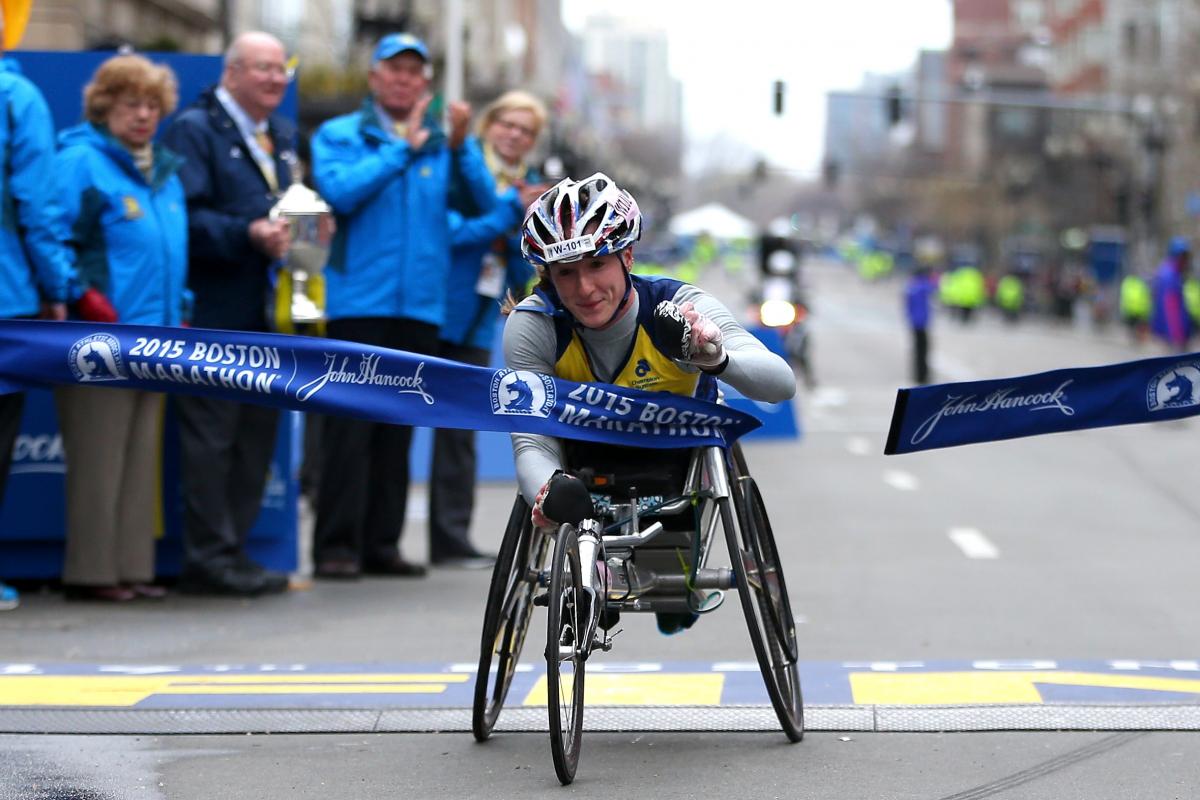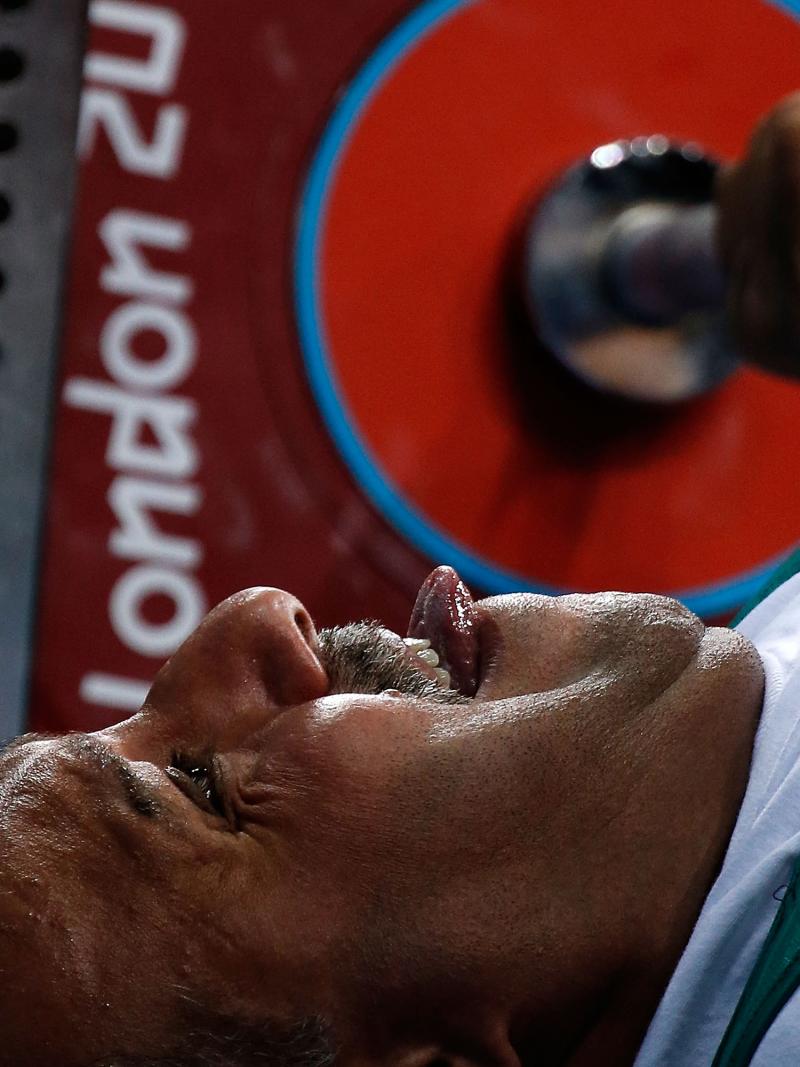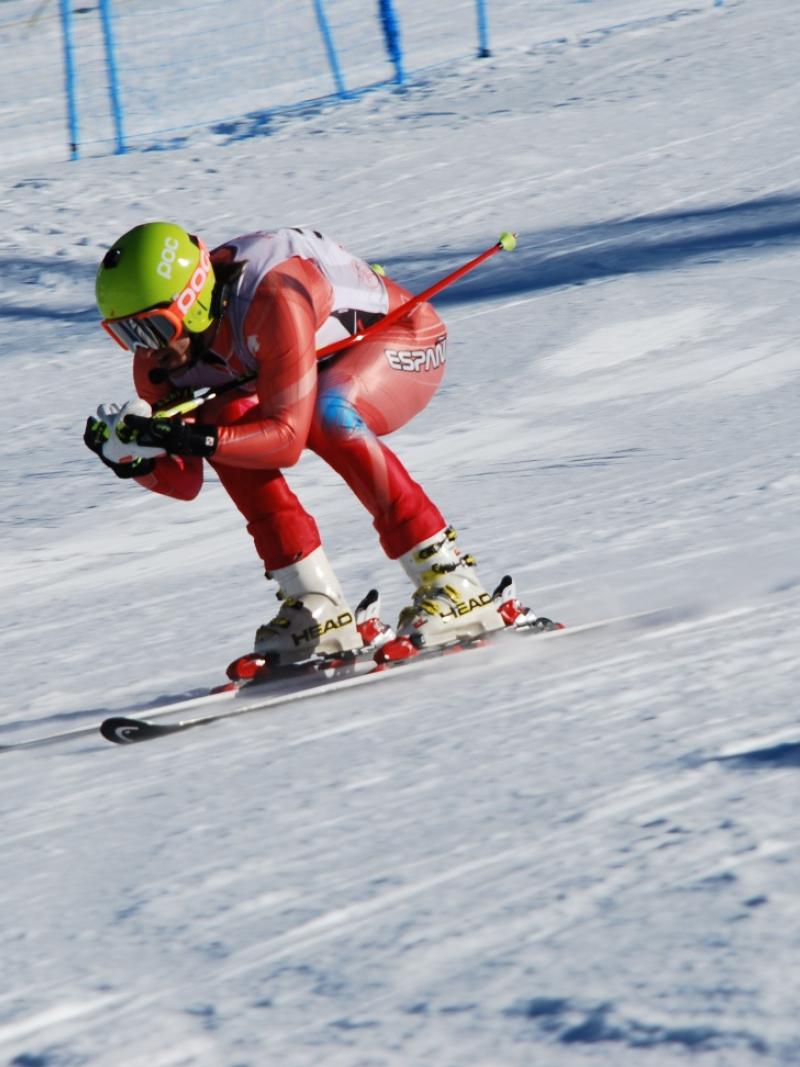Elizabeth Broad: Fueling up for an endurance event
The author of ‘Sports Nutrition for Paralympic Athletes’ explains how to prepare your body ahead of a marathon race. 24 Apr 2015
Tatyana McFadden of the United States crosses the finish line to win the women's push rim wheelchair division of the 119th Boston Marathon on April 20, 2015 in Boston, Massachusetts.
April marks the start of the marathon season with first events in Boston, USA and then London, Great Britain. The event this Sunday (26 April) in the British capital this year doubles up as the IPC Athletics Marathon World Championships.
Performance in endurance events can be influenced by nutrition practices, and athletes can undo a lot of good preparation in training by not having an effective race day nutrition plan. There is no ‘one size fits all’, but there are general guidelines that should be considered when developing your personal race day plan. Practice makes perfect so athletes are strongly encouraged to use training days to fine tune your race day plan until you have something you’re totally confident in. The following is a step-by-step list of nutrition strategies that a para-athlete should consider for endurance events:
2-3 days before the race
• There is good evidence that carbohydrate LOADING may be a useful strategy prior to a marathon for elite athletes, since glycogen stores can limit performance at these race speeds and durations. Carbohydrate loading involves a high carbohydrate intake (8-10g/kg body weight) for 2-3 days before the race. Consuming this amount of carbohydrate can be challenging, and while some higher sugar / lower nutrient foods and fluids may help achieve the goals it is definitely NOT an excuse to eat a lot of junk food leading into a race. It needs to be well planned, as total protein and fat intake may need to be reduced in order to make room for the higher carbohydrate intake. Be aware that carbohydrate loading will increase body weight (glycogen is stored with water), but this is an extra fuel depot that could be very useful towards the end of the race!
• Whether carbohydrate loading will benefit a wheelchair marathoner is less certain – the time to complete the marathon is generally shorter than for a runner, however the total muscle mass in the arms and torso is smaller than the leg muscles so in theory carbohydrate storage capacity could remain a limiting factor to performance. Wheelchair racers are still encouraged to maintain a sufficiently high carbohydrate intake to ensure glycogen stores are fully optimised.
• Make sure you are maintaining adequate hydration levels, especially if you are carbohydrate loading. Over-hydrating isn’t necessary, but adequate hydration (urine pale ‘straw’ colour during the day) is beneficial.
• If you have a history of gut-related problems during a race, consider a lower fibre intake for 2-3 days before the race. Reducing the fibre intake (white or more refined grains, low fruit and vegetable intake, minimal nuts and legumes) reduces the amount of ‘residue’ in your bowels and large intestine, and can reduce the risk of ‘urgency’. It also means that you will have more capacity to increase your carbohydrate intake because you won’t feel as full.
The day before the race
There is no need to eat any one specific food (such as pasta!) the day before the race. This day is more about making sure you eat familiar foods that you know sit well on your stomach. Avoid spicy foods, fried foods and anything that may have a higher risk of food poisoning (like sushi that’s not been stored well, undercooked chicken, food from street stalls).
The morning of the race
A pre-race meal is very important as it tops up your fluid and blood glucose levels to help you get off to a strong start, and prevents you from getting hungry during the race (which can be very distracting). However marathon races can start very early in the morning, wheelchair marathoners don’t generally like much volume in their stomachs, and nerves can often deter many racers from wanting to eat. Eat something you know sits well on your stomach – this could be as simple as toast with honey or jam and some water, or a small bowl of cereal eaten around two hours before the race. If you really can’t tolerate food, consider a liquid meal such as a breakfast drink or a smoothee, as these can both hydrate you and are digested faster than solid food is.
As you’re warming up, remember to sip on fluid. If you haven’t eaten much, it can be a good idea to use a sports drink or diluted fruit juice as part of this fluid to do a final top up on carbohydrate. Some athletes may even opt for a gel prior to race start for this final top up of carbohydrate, but if you do this make sure you wash it down with water and give your mouth a good rinse so it has less impact on your teeth!
During the race
Most marathons have regular drink and ‘fuel’ stations. Runners whose race will take over two hours could make effective use of these products. Evidence suggests consuming 30-60g carbohydrate per hour is a good target – especially if you consumed limited food before race start. This can be via sports drinks (1 litre per hour if made to normal strength would achieve 60g, but you may not tolerate or need a full litre of fluid each hour so adjust according to your own needs), or gels (two standard gels per hour, consumed with water). However, consuming this amount of carbohydrate and fluid during exercise takes practice, so if you’ve never done so in training a race is not a good time to test it out! You should also have a good understanding of your personal sweat rate so that you don’t drink more than what you need to.
Wheelchair marathoners generally take less time to complete the marathon and have more limited opportunities to eat and drink during the race. Athletes should consider having a water bottle on the front of the chair with a straw that you can take sips out of, especially when the conditions are hot. There is evidence that spinal injured athletes can benefit from sports drinks with higher carbohydrate concentrations (10 per cent carbohydrate) just as much as those with normal carbohydrate concentrations (6 per cent), so if your sweat rate is low (i.e. you don’t need much fluid) choose a more concentrated sports drink mix. Some athletes may tape a gel or two onto their chair frame, and then choose strategic moments in the race to tear them off and consume, which should include some water to help dilute it out in the stomach.
As always, take the opportunity to talk through your proposed race day plan with a qualified sports dietitian / nutritionist.







